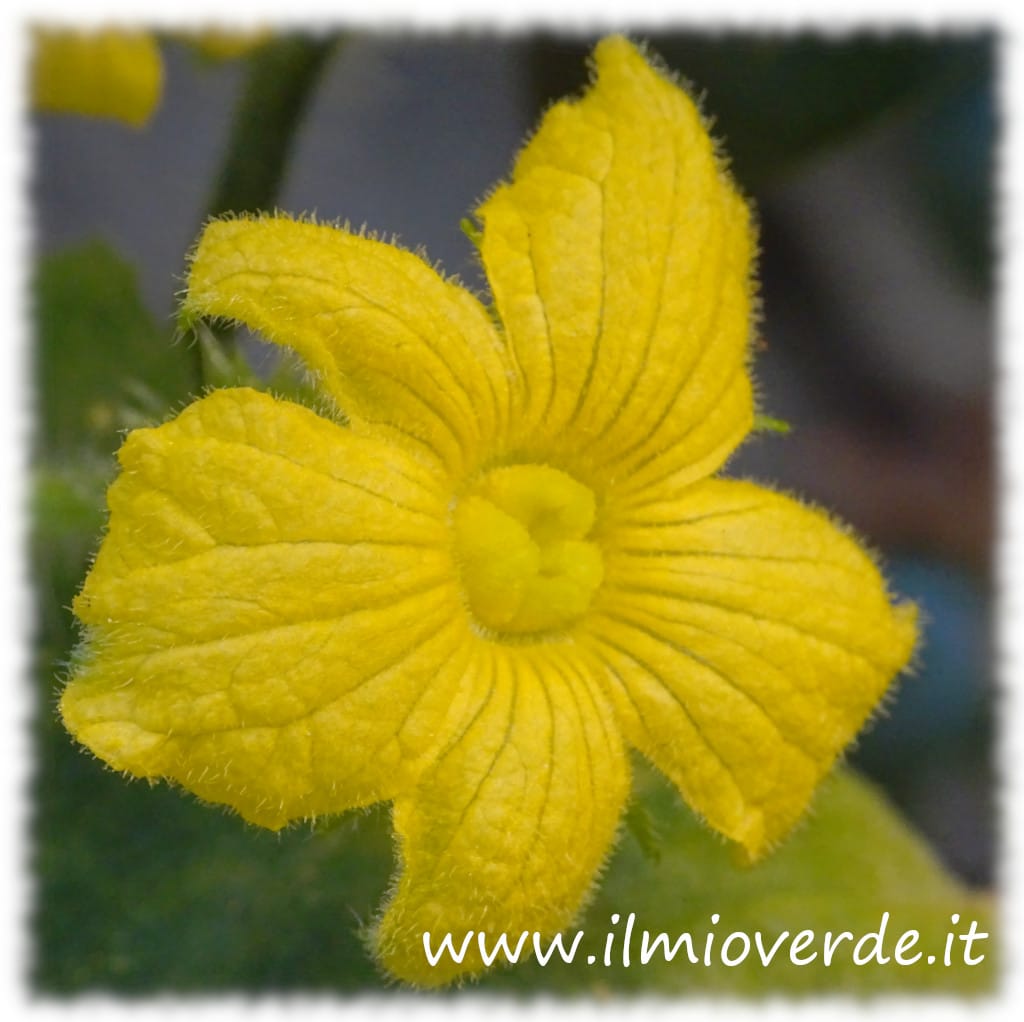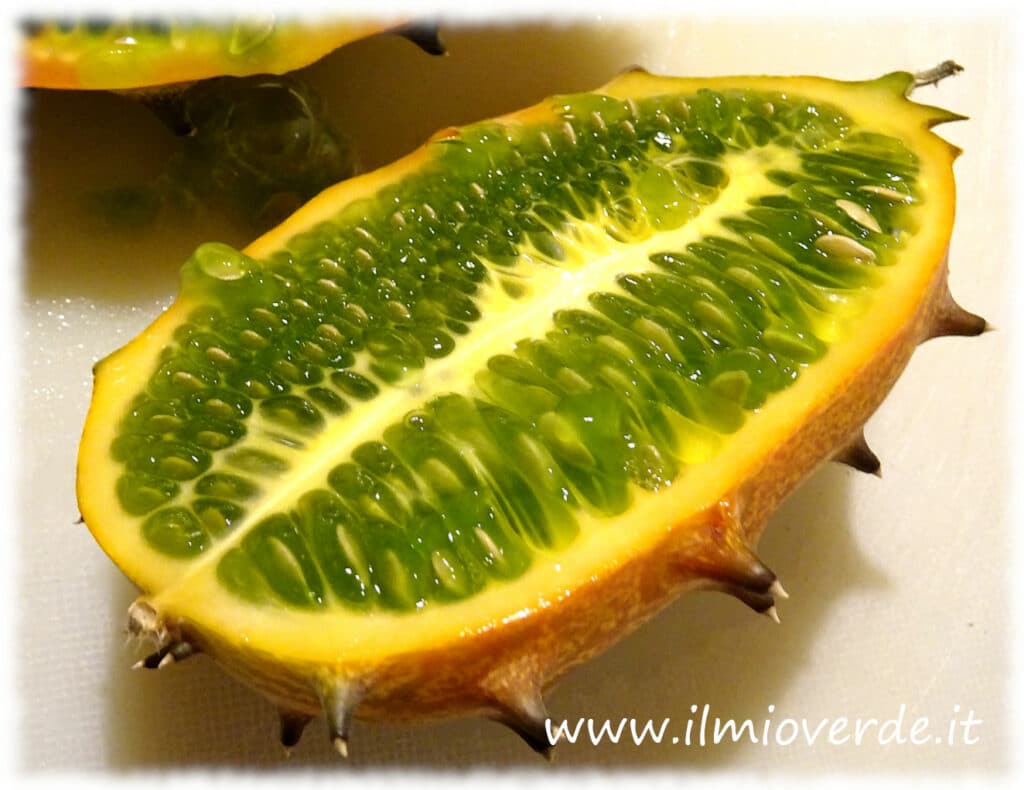Kiwano (Cucumis metuliferus)
The Kiwano (Cucumis metuliferus), also known as the horned cucumber or African horned melon, is a rare and fascinating plant that is gaining popularity due to its unique appearance and numerous nutritional benefits. Native to the regions of Sub-Saharan Africa, it is easily recognizable by its bright orange skin and luminescent green pulp. This exotic fruit not only captivates with its beauty but is also rich in vitamins A, C, and antioxidants, making it perfect for those seeking a nutritious and refreshing fruit.
Botanical Description
- Scientific Name: Cucumis metuliferus
Family: Cucurbitaceae
Origin: Sub-Saharan Africa - Physical Characteristics: The Kiwano has a spiky orange skin with translucent green pulp and edible seeds inside. Its shape and exotic appearance make it an easily recognizable fruit.
Cultivation and Care
- Climate: Kiwano prefers warm and temperate climates, with direct sunlight and mild temperatures. It thrives in warm environments and is also resistant to short periods of drought.
- Exposure: Requires a lot of sunlight, so it’s important to plant it in sunny locations.
- Irrigation: The plant needs regular watering but is fairly drought-resistant.
- Soil: Prefers well-drained, sandy, and nutrient-rich soil.
Useful Cultivation Tips
The Kiwano (Cucumis metuliferus), also known as the horned melon, comes from the warmer regions of Africa and has specific climatic needs. In Italy, where the climate can be cooler, especially in spring and early summer, it may struggle to bear fruit unless some precautions are taken.

Useful Tips
To encourage good fruiting, it is important to:
- Start from seedlings: Kiwano can struggle to germinate and grow quickly when directly planted in the open field. Preparing the seedlings indoors or in a greenhouse about 4-6 weeks before the last frost allows the plant to start growing under controlled conditions and then transplant it outside when the weather is warmer.
- Temperature and light: Kiwano needs warm temperatures to grow and produce fruit. An ideal daytime temperature is between 24-30°C, with nights not too cold. Planting in an area that receives plenty of direct sunlight is essential to stimulate flowering and fruiting.
- Protection from cold: In areas where nighttime temperatures may drop below 10°C, using plastic tunnels or protective covers to warm the soil and protect the seedlings can be helpful. This also helps improve initial growth and promotes a more abundant fruit production.
- Flowering and pollination: Kiwano produces flowers that must be pollinated, usually by insects, but in the absence of a good number of pollinators, manual pollination can also be used. Without proper pollination, the plant may not produce fruit.
If the Kiwano is not grown under optimal conditions or is not properly prepared, it may not flower or fruit correctly. Early preparation of seedlings is recommended to achieve better results in these conditions.

Uses and Benefits
- Nutrition: Kiwano is rich in vitamin C, potassium, and magnesium, making it beneficial for heart health and boosting the immune system.
- Cuisine: The pulp of the Kiwano is fresh, crunchy, and slightly tangy, making it ideal for salads, sauces, or as a garnish for cocktails. Its texture makes it perfect for fresh, summer dishes.
- Medicinal Properties: Due to its high water content, Kiwano is an excellent fruit for maintaining hydration and is also known for its antioxidant properties.
Curiosities
History and Symbolism: Kiwano has been cultivated in Africa for centuries, and in many traditions, it is considered a symbol of prosperity. Its cultivation has spread in recent years to other regions, appreciated not only for its appearance but also for its nutritional benefits and versatility in cooking.
Immagine di Davide Giuseppe Zannini
